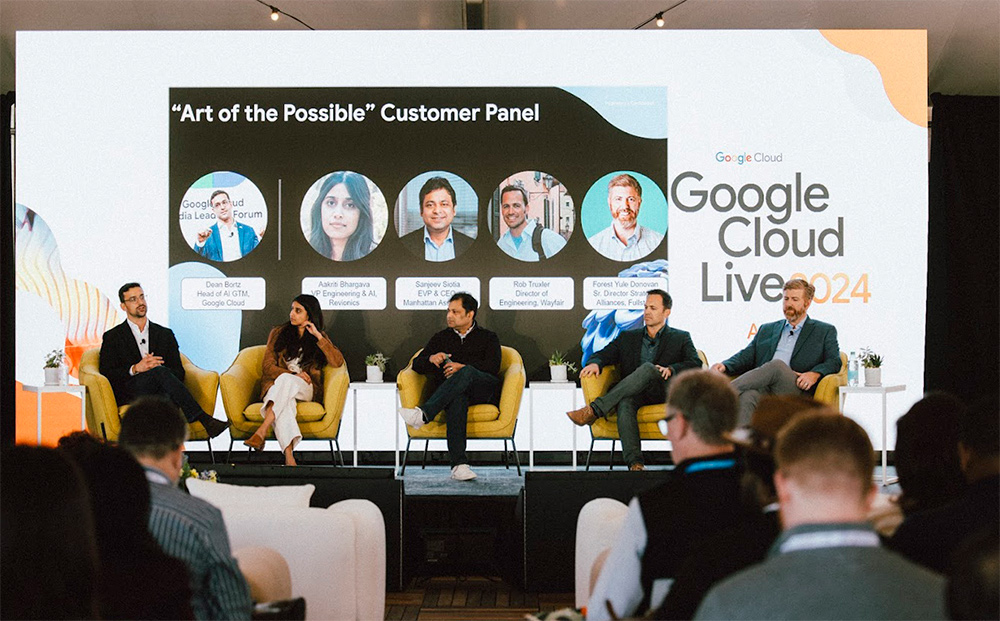Exploring the Future of AI: Revionics VP Talks GenAI, Scalability, and the Importance of Guardrails
As the VP of Engineering and AI at Revionics, I have the opportunity to work at the intersection of product engineering, AI, and analytics, driving innovation in AI-powered pricing solutions for retailers.
When I’m asked what makes Revionics the global leader in retail pricing, my answer is always the same: our team, their deep expertise, and the strength of our science. But what truly sets us apart is our unwavering focus on retail price optimization. This dedication enables us to continuously refine our solutions, stay ahead of industry trends, and drive meaningful business impact for our clients. At the same time, we are always exploring new ways to accelerate innovation and enhance the customer experience within our platform.

Staying ahead in AI and retail technology requires continuous learning and engagement with the broader industry. I actively participate in AI and technology communities, regularly attending events hosted by leading tech companies. Recently, I had the opportunity to speak at events hosted by Google and MongoDB, where discussions highlighted several key industry trends. As I reflected on these experiences, three key themes stood out.
1. GenAI use cases and their prioritization
In 2024, GenAI dominated headlines, fueling widespread curiosity and enthusiasm about its potential. While much of the excitement focuses on what GenAI can achieve next, there’s a noticeable shift toward more pragmatic discussions—particularly about how to prioritize GenAI use cases that not only enhance the customer experience but also drive internal productivity.
The goals are clear: reduce the time to information, accelerate time to market, and streamline decision-making. Across industries, tech leaders are focusing on how GenAI can create meaningful improvements in these areas.
At Revionics, we’ve already made significant investments in GenAI to enhance the customer experience—empowering clients with faster insights and improving the usability and accessibility of our solutions. From an engineering perspective, however, we’re still navigating the complexities.
While GenAI coding tools have proved highly effective for prototypes, proofs of concept (POCs), and smaller, net-new projects, applying them to systems with significant legacy code, specifically with respect to code generation, is far more challenging. It’s not something that can be relegated to a side project; it requires organizational prioritization. And that prioritization often involves tough trade-offs, particularly when internal initiatives compete with customer-facing use cases.
This raises a critical question for every organizational leader: How should companies prioritize between customer-facing AI initiatives and internal productivity use cases? At Revionics, we strive to balance quick internal GenAI wins with long-term customer-focused innovations, weighing the impact, long-term value, and effort required. Fine-tuning the right approach will be essential as we continue exploring how GenAI can drive both customer outcomes and internal efficiency.
2. Approach to building scalable AI products and GenAI experiences
Another common question and discussion topic at technology industry events is what is the right approach to building scalable AI products and GenAI experiences?
Building a successful AI product isn’t about applying AI indiscriminately—it starts with clearly defining the problem and goals you are trying to solve for before determining whether AI is the right solution. Rather than forcing AI into a use case, the focus should be on identifying the right challenges and then leveraging AI where it truly adds value.
Once the problem is defined, the key question becomes how do you solve it effectively? At Revionics, we take an iterative approach, starting with POCs, small-scale testing, and continuous experimentation—embracing a fail-fast mindset. This allows us to validate ideas in real-world conditions, refine models based on business needs, and minimize risks by implementing guardrails to ensure AI solutions are both reliable and scalable.
By prioritizing rapid learning and iteration, we develop practical, transparent AI solutions that drive measurable impact for retailers. This same approach guided the development of our Conversational Analytics text-to-SQL tool, now live in production, where we focused on three key pillars: accuracy, performance, and explainability.
3. The importance of guardrails, business rules, and explainability around AI
At nearly every industry event I’ve attended, explainability, transparency, and ethical safeguards in AI have been hot topics—and top priorities.
At Revionics, we leverage a reinforcement learning architecture to learn from noisy real-world data, optimizing pricing decisions to align with retailers’ objectives. With 20+ years of predictive AI expertise, explainability and transparency remain central to our approach. Our platform allows retailers to set business rules and constraints that prevent unintended or unethical outcomes, acting as guardrails around AI-driven pricing. For example, rules can ensure price parity between men’s and women’s shaving products or prevent excessive price increases within a given time frame. These safeguards help maintain fairness, consistency, and consumer trust.
Transparency is essential for building trust and driving adoption, as it holds AI providers accountable, while explainability empowers users to understand and refine AI-driven decisions. At Revionics, we’ve tried to improve transparency by enhancing our analytics platform—exposing key datasets like forecast vs. actuals—and prioritize explainability by introducing a GenAI-powered data chat that allows users to see, interpret, and iterate on AI-generated recommendations. This helps transform AI from a black box into a clear, actionable tool, enabling smarter, more informed pricing decisions.
Last year, these were among the most prominent AI themes I encountered, but as the industry rapidly evolves—particularly with the shift into the agentic space—I’m eager to see what 2025 brings. At Revionics, we remain committed to staying at the forefront of AI and technological advancements, continuously innovating to enhance the customer experience and drive market impact.
If you would like to learn more about Revionics’ innovation investments, including Conversational Analytics and our agentic journey, reach out to me on LinkedIn.
Aakriti Bhargava is the Vice President of AI and Engineering at Revionics. She leverages her extensive experience and subject matter expertise in e-commerce, consumer behavior, demand modeling, and computer infrastructure to develop cutting-edge applications that help retailers solve their unique business challenges. She drives overall technical strategy, architecture, and innovation across the Revionics engineering organization.
